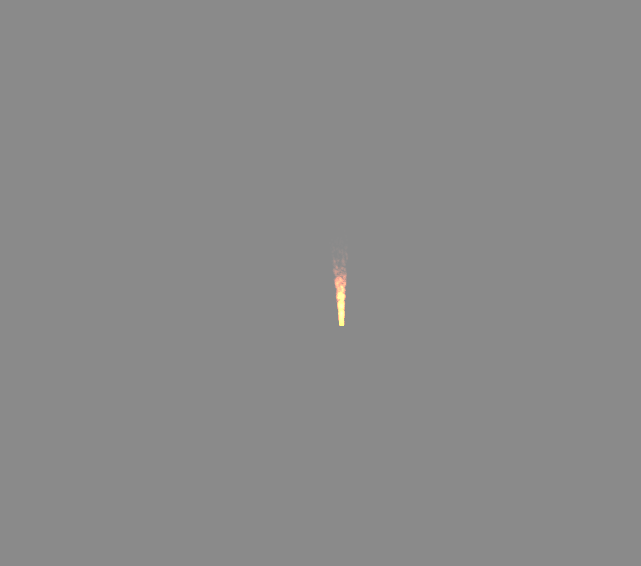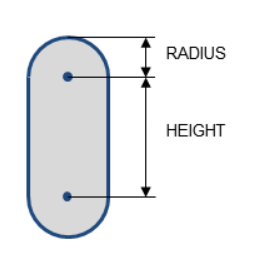致谢
感谢网友提出这个问题。大家有问题也可以在评论区提出,有问必有答。
问题描述
粒子系统在OSG里好好的,结果放在地球上就看不见了。将代码发给了我,让我长个眼看看。也欢迎大家把问题发给我调试。
本节代码在网盘中:
定位过程
怀疑是粒子太小,扒拉着找不到的原因。因此我创建了一个大盒子,长宽高都是10000米,将其移到109,34,0处,大概是陕西附近,然后盒子的面高度就是10000/2=5000。
然后我再将粒子移到109,34,5000处,就可以在盒子的面上找粒子。就找到了。

确实不仔细找,地球那么大,找不到的。
关键代码
将模型移到某处用的是MatrixTransform,然后用EllipsoidModel算出矩阵即可,以下代码是将盒子移到109,34,0处:
osg::MatrixTransform* mt = new osg::MatrixTransform;
//将这个粒子系统移动到109 34 500米
osg::EllipsoidModel* em = new osg::EllipsoidModel;
osg::Matrixd mtd;
em->computeLocalToWorldTransformFromLatLongHeight(osg::inDegrees(34.0), osg::inDegrees(109.0), 0, mtd);
mt->setMatrix(mtd);
osg::Node* glider = createBox();
root->addChild(mt);
mt->addChild(glider);
以下是所有代码
#include <osgViewer/Viewer>
#include <osgDB/ReadFile>
#include <osgGA/EventHandler>
#include <osgParticle/ParticleSystem>
#include <osgParticle/LinearInterpolator>
#include <osg/MatrixTransform>
#include <osgParticle/RandomRateCounter>
#include <osgParticle/PointPlacer>
#include <osgParticle/RadialShooter>
#include <osgParticle/ModularEmitter>
#include <osgParticle/ParticleSystemUpdater>
#include <osgParticle/ModularProgram>
#include <osgEarth/EarthManipulator>
#include <osgEarth/ExampleResources>
#include <osgEarth/MapNode>
#include <osgGA/NodeTrackerManipulator>
#include <osg/ShapeDrawable>
#include <osg/Geode>
#include <osg/Geometry>
using namespace osgEarth;
using namespace osgEarth::Util;
osg::Node* createBox()
{
osg::Geode* gnode = new osg::Geode;
osg::ShapeDrawable* sd = new osg::ShapeDrawable(new osg::Box(osg::Vec3(0.0, 0.0, 0.0), 10000.0, 10000.0, 10000.0));
gnode->addDrawable(sd);
return gnode;
}
//创建火球
void createFireBall(osg::MatrixTransform* smokeNode)
{
// 创建粒子对象,设置其属性并交由粒子系统使用。
osgParticle::Particle particleTempalte;
particleTempalte.setShape(osgParticle::Particle::QUAD);
particleTempalte.setLifeTime(15); // 单位:秒
particleTempalte.setSizeRange(osgParticle::rangef(3.0f, 1.0f)); // 单位:米
particleTempalte.setAlphaRange(osgParticle::rangef(1, 0));
particleTempalte.setColorRange(osgParticle::rangev4(osg::Vec4(1.0f, 0.2f, 0.0f, 1.0f),
osg::Vec4(0.1f, 0.1f, 0.1f, 0)
));
particleTempalte.setPosition(osg::Vec3(0.0f, 0.0f, 0.0f));
particleTempalte.setVelocity(osg::Vec3(0.0f, 0.0f, 0.0f));
particleTempalte.setMass(0.1f); //单位:千克
particleTempalte.setRadius(0.2f);
particleTempalte.setSizeInterpolator(new osgParticle::LinearInterpolator);
particleTempalte.setAlphaInterpolator(new osgParticle::LinearInterpolator);
particleTempalte.setColorInterpolator(new osgParticle::LinearInterpolator);
// 创建并初始化粒子系统。
osgParticle::ParticleSystem* particleSystem = new osgParticle::ParticleSystem;
particleSystem->setDataVariance(osg::Node::STATIC);
// 设置材质,是否放射粒子,以及是否使用光照。
particleSystem->setDefaultAttributes("Images/smoke.rgb", true, false);
osg::Geode* geode = new osg::Geode;
geode->addDrawable(particleSystem);
smokeNode->addChild(geode);
//设置为粒子系统的缺省粒子对象。
particleSystem->setDefaultParticleTemplate(particleTempalte);
//获取放射极中缺省计数器的句柄,调整每帧增加的新粒子数目
osgParticle::RandomRateCounter* particleGenerateRate = new osgParticle::RandomRateCounter();
particleGenerateRate->setRateRange(30, 50);
// 每秒新生成的粒子范围
particleGenerateRate->setDataVariance(osg::Node::DYNAMIC);
// 自定义一个放置器,这里创建并初始化一个点放置器
osgParticle::PointPlacer* particlePlacer = new osgParticle::PointPlacer;
particlePlacer->setCenter(osg::Vec3(0.0f, 0.0f, 0.0f));
particlePlacer->setDataVariance(osg::Node::DYNAMIC);
// 自定义一个弧度发射器
osgParticle::RadialShooter* particleShooter = new osgParticle::RadialShooter;
// 设置发射器的属性
particleShooter->setDataVariance(osg::Node::DYNAMIC);
particleShooter->setThetaRange(-0.1f, 0.1f);
// 弧度值,与Z 轴夹角
particleShooter->setPhiRange(-0.1f, 0.1f);
particleShooter->setInitialSpeedRange(5, 7.5f);//单位:米/秒
//创建标准放射极对象
osgParticle::ModularEmitter* emitter = new osgParticle::ModularEmitter;
emitter->setDataVariance(osg::Node::DYNAMIC);
emitter->setCullingActive(false);
// 将放射极对象与粒子系统关联。
emitter->setParticleSystem(particleSystem);
// 设置计数器
emitter->setCounter(particleGenerateRate);
// 设置放置器
emitter->setPlacer(particlePlacer);
// 设置发射器
emitter->setShooter(particleShooter);
// 把放射极添加为变换节点
smokeNode->addChild(emitter);
// 添加更新器,以实现每帧的粒子管理。
osgParticle::ParticleSystemUpdater* particleSystemUpdater = new osgParticle::ParticleSystemUpdater;
// 将更新器与粒子系统对象关联。
particleSystemUpdater->addParticleSystem(particleSystem);
// 将更新器节点添加到场景中。
smokeNode->addChild(particleSystemUpdater);
// 创建标准编程器对象并与粒子系统相关联。
osgParticle::ModularProgram* particleMoveProgram = new osgParticle::ModularProgram;
particleMoveProgram->setParticleSystem(particleSystem);
// 最后,将编程器添加到场景中。
smokeNode->addChild(particleMoveProgram);
}
int main()
{
osgEarth::initialize();
osgViewer::Viewer viewer;
osg::Group* root = new osg::Group;
root->addChild(osgDB::readNodeFile("simple.earth"));
osg::MatrixTransform* mt = new osg::MatrixTransform;
//将这个粒子系统移动到109 34 500米
osg::EllipsoidModel* em = new osg::EllipsoidModel;
osg::Matrixd mtd;
em->computeLocalToWorldTransformFromLatLongHeight(osg::inDegrees(34.0), osg::inDegrees(109.0), 0, mtd);
mt->setMatrix(mtd);
osg::Node* glider = createBox();
root->addChild(mt);
mt->addChild(glider);
//粒子系统
osg::MatrixTransform* mt1 = new osg::MatrixTransform;
osg::Matrixd mtd1;
em->computeLocalToWorldTransformFromLatLongHeight(osg::inDegrees(34.0), osg::inDegrees(109.0), 5000, mtd1);
mt1->setMatrix(mtd1);
createFireBall(mt1);
root->addChild(mt1);
viewer.setCameraManipulator(new EarthManipulator());
viewer.setSceneData(root);
return viewer.run();
}
© 版权声明
文章版权归作者所有,未经允许请勿转载。
THE END










![[转]我国CAD软件产业亟待研究现状采取对策-卡核](https://www.caxkernel.com/wp-content/uploads/2024/07/frc-f080b20a9340c1a89c731029cb163f6a-212x300.png)






